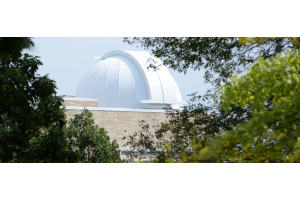
In most years, there are 12 full moons, one for each month with each full moon having its own name. Most of these names originated in Europe or from the Native Americans, with the names being chosen to reflect the changes in the natural world that occur in that month. So what is a strawberry Moon? And what are some names of the other full moons?
Why Is It Called a Strawberry Moon?
The Strawberry Moon is the name given to June’s full moon, and as sweet as it sounds, unfortunately, the Moon won’t appear red or even pinkish. As it occurs in June, it can either be the last full moon of spring, or the first full moon of summer, depending on whether it falls before or after the summer solstice.
Its name originates from the Algonquin Native American tribes who welcomed it at the start of the strawberry harvesting season. The Algonquin tribes lived in the northeast of the United States, and as settlers from Europe came to North America, they encountered the Algonquin and adopted many of the same names.
Image Credit: NASA

Many of the names the Algonquin gave to the full moon are still in use today:
| January | Wolf Moon | When the wolves howl due to hunger |
|---|---|---|
| February | Snow Moon | The month of the heaviest snowfall |
| March | Worm Moon | When the worms start to emerge from the ground |
| April | Pink Moon | Named for the pink phlox flowers that bloom |
| May | Flower Moon | When most other flowers bloom |
| June | Strawberry Moon | The start of the strawberry harvesting season |
| July | Buck Moon | When the bucks start to grow new antlers |
| August | Sturgeon Moon | The best time to catch sturgeon in the Great Lakes |
| September | Corn Moon | When the corn is ready to be harvested |
| October | Hunter’s Moon | The time for hunting and storing food for winter |
| November | Beaver Moon | The time to catch beavers for fur to make winter clothing |
| December | Cold Moon | The onset of winter and long, dark and cold nights |
What Other Full Moons Have Names Connected to Food?
It’s probably no surprise to learn that June’s full moon isn’t the only one with a food-related name. The winter full moons tend to have names relating to the weather or animals, but the spring and summer more than make up for that!
| April | Egg Moon |
|---|---|
| May | Egg Laying Moon, Milk Moon |
| June | Strawberry Moon, Berries Ripen Moon, Green Corn Moon |
| July | Salmon Moon, Raspberry Moon, Herb Moon, Mead Moon |
| August | Sturgeon Moon, Grain Moon, Green Corn Moon |
| September | Corn Moon, Wine Moon, Barley Moon |
| October | Drying Rice Moon |
While the reasons for a lot of these names are fairly obvious, there are a few whose origins are a little more obscure. For example, May’s full moon is sometimes called the Milk Moon because this was the month farmers would move the cows into the pastures where they could feed their calves.
July’s full moon is sometimes known as the Mead moon. This alcoholic beverage is made by fermenting honey and water. Since honey is typically ready from late June and mead can take ten to twenty days to ferment, this means the mead would be ready in early July.
(Incidentally, it’s thought the word honeymoon could have its origins in the high number of weddings that occur in June and July - especially given that mead would often be served during the celebrations!)
An alternate name for October’s full moon - the Drying Rice Moon - comes from the Dakota tribes of Minnesota and western Wisconsin. Rice is harvested for about 30 days between mid-September and mid-October, and it then needs to be dried in preparation for the coming months.
Regardless of its name, the full moon is always a spellbinding sight. The next time you see a full moon, consider its name - is there a seasonal food it reminds you of?

Learn More
Interested in learning more about the Moon? Not sure where to begin? Check out our Astronomy Hub!
This Article was Last Updated on 08/18/2023











